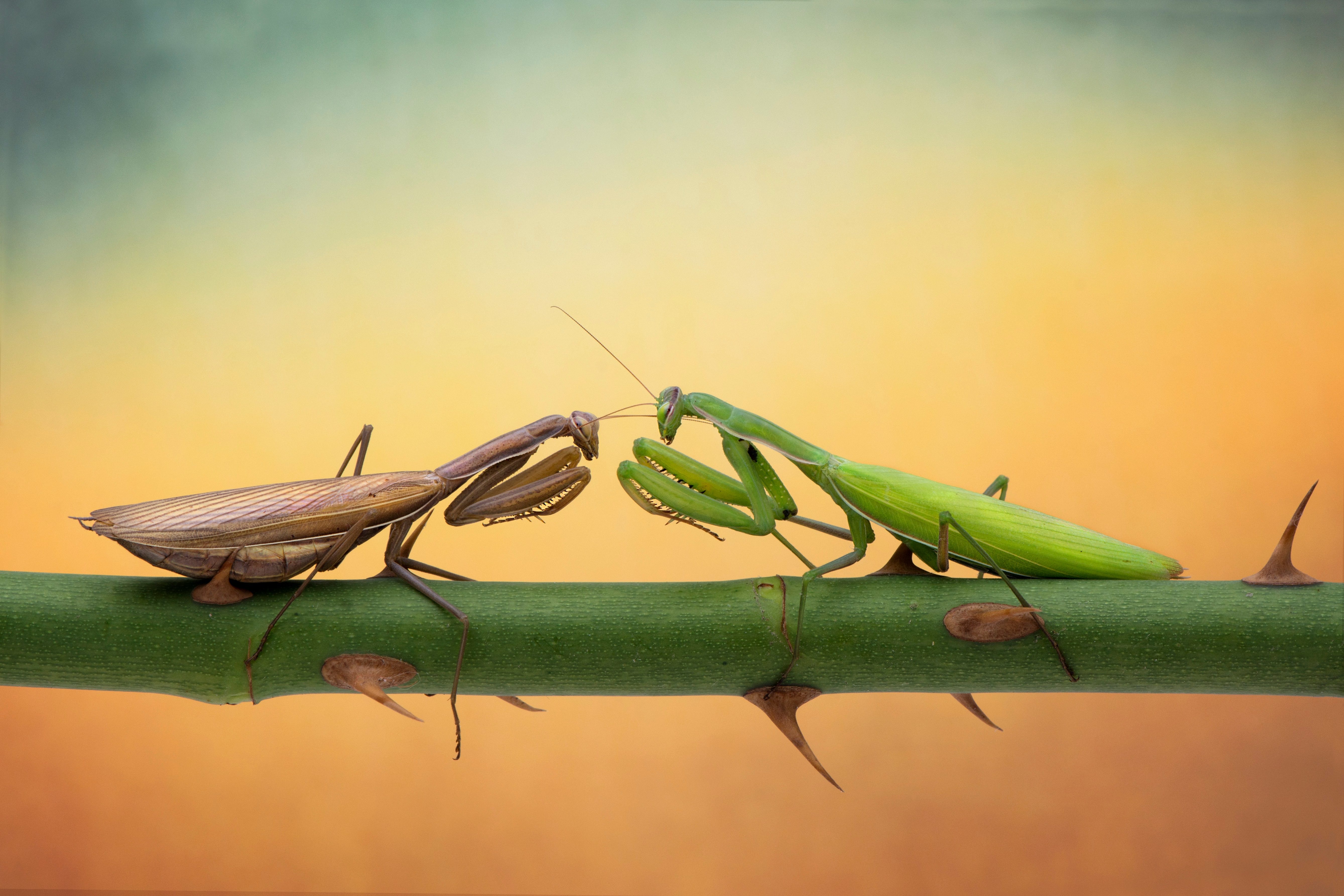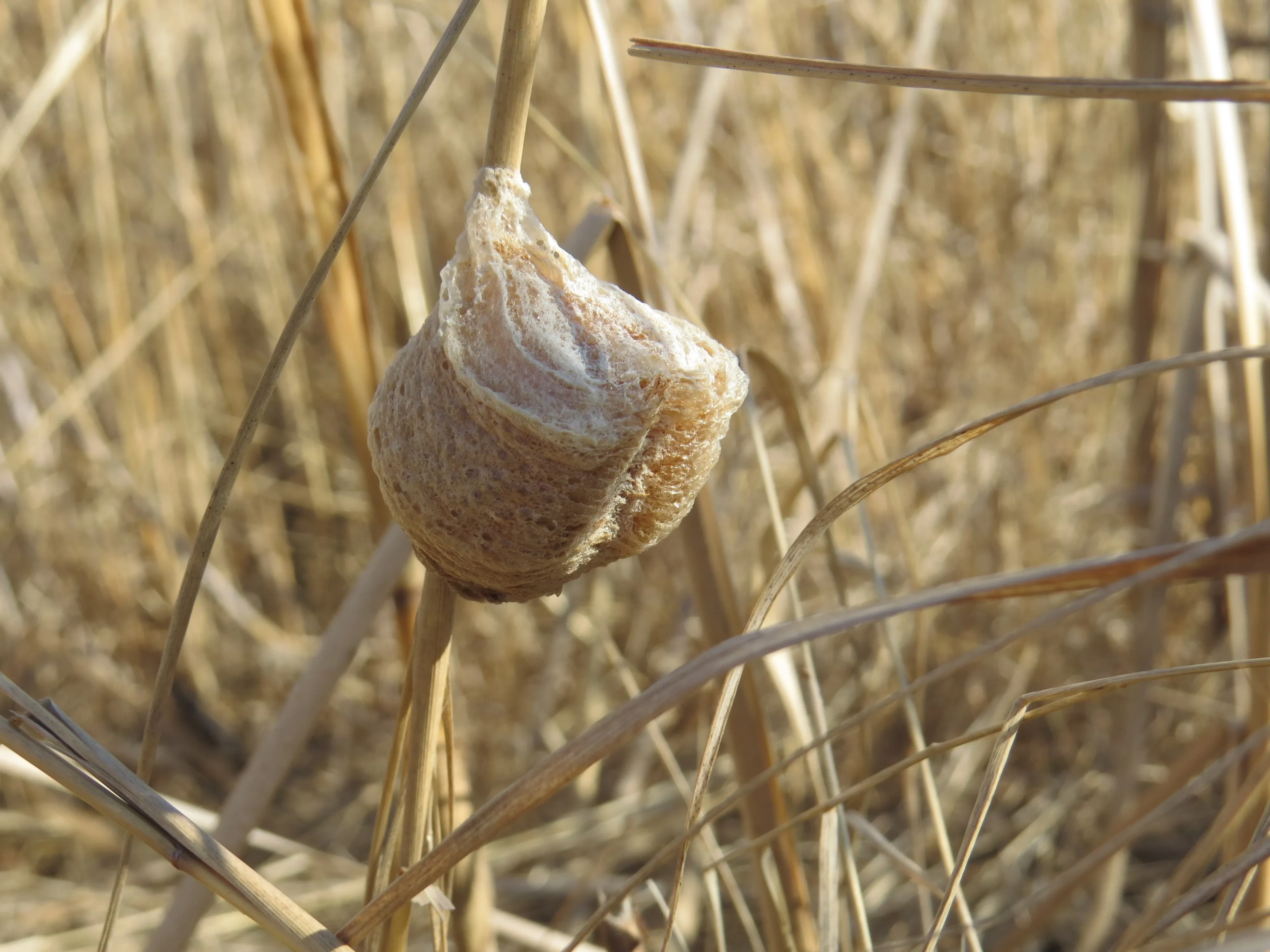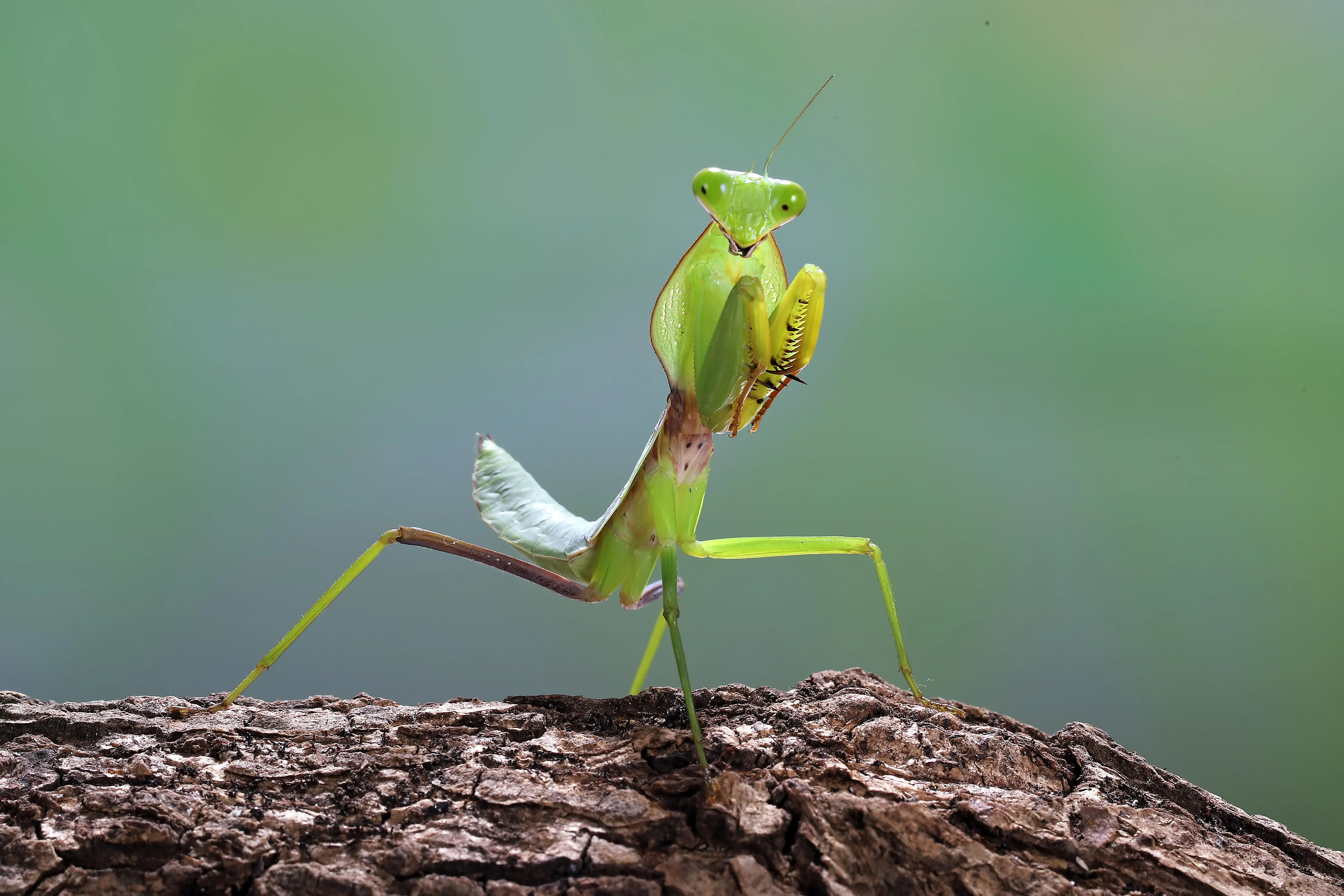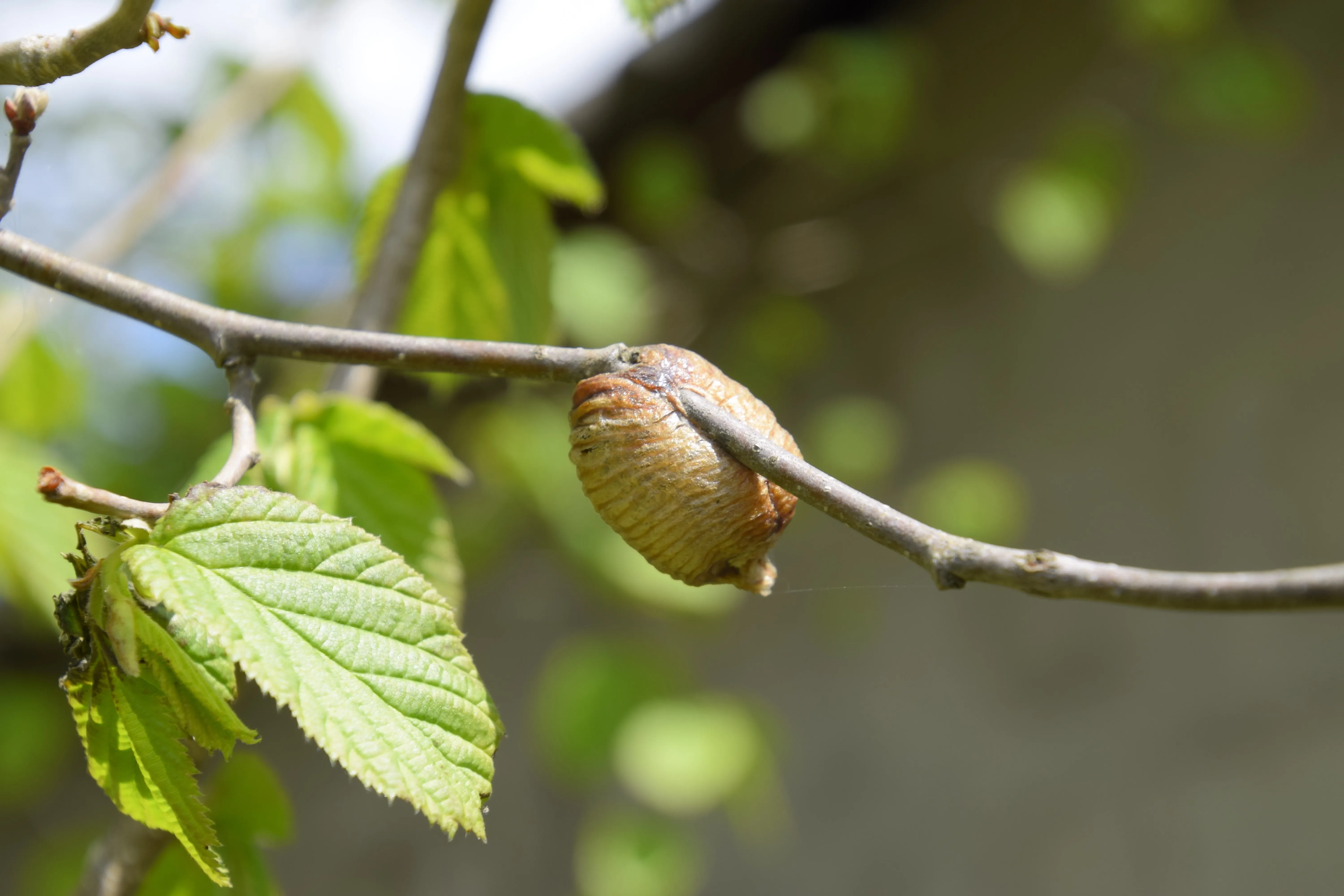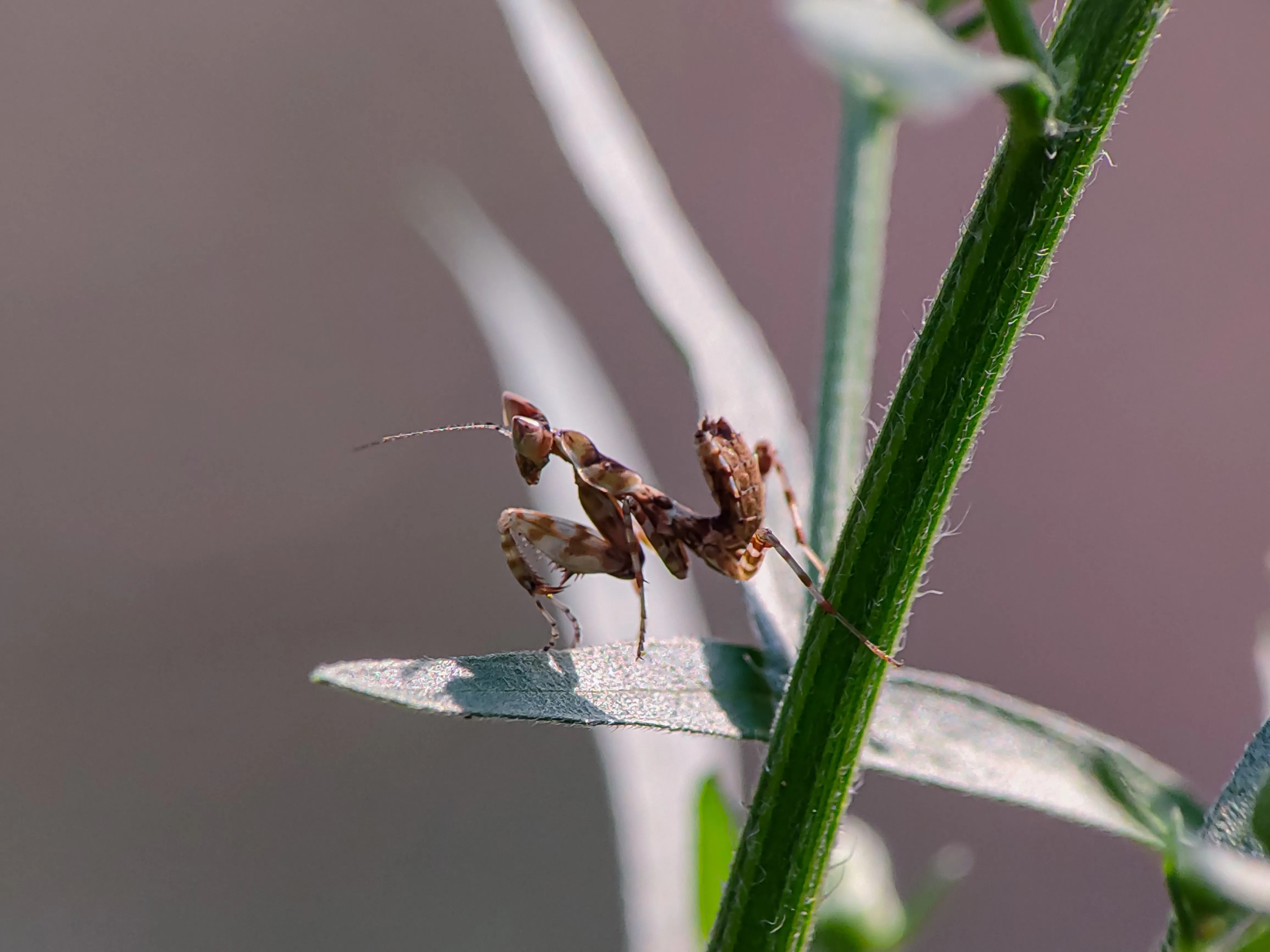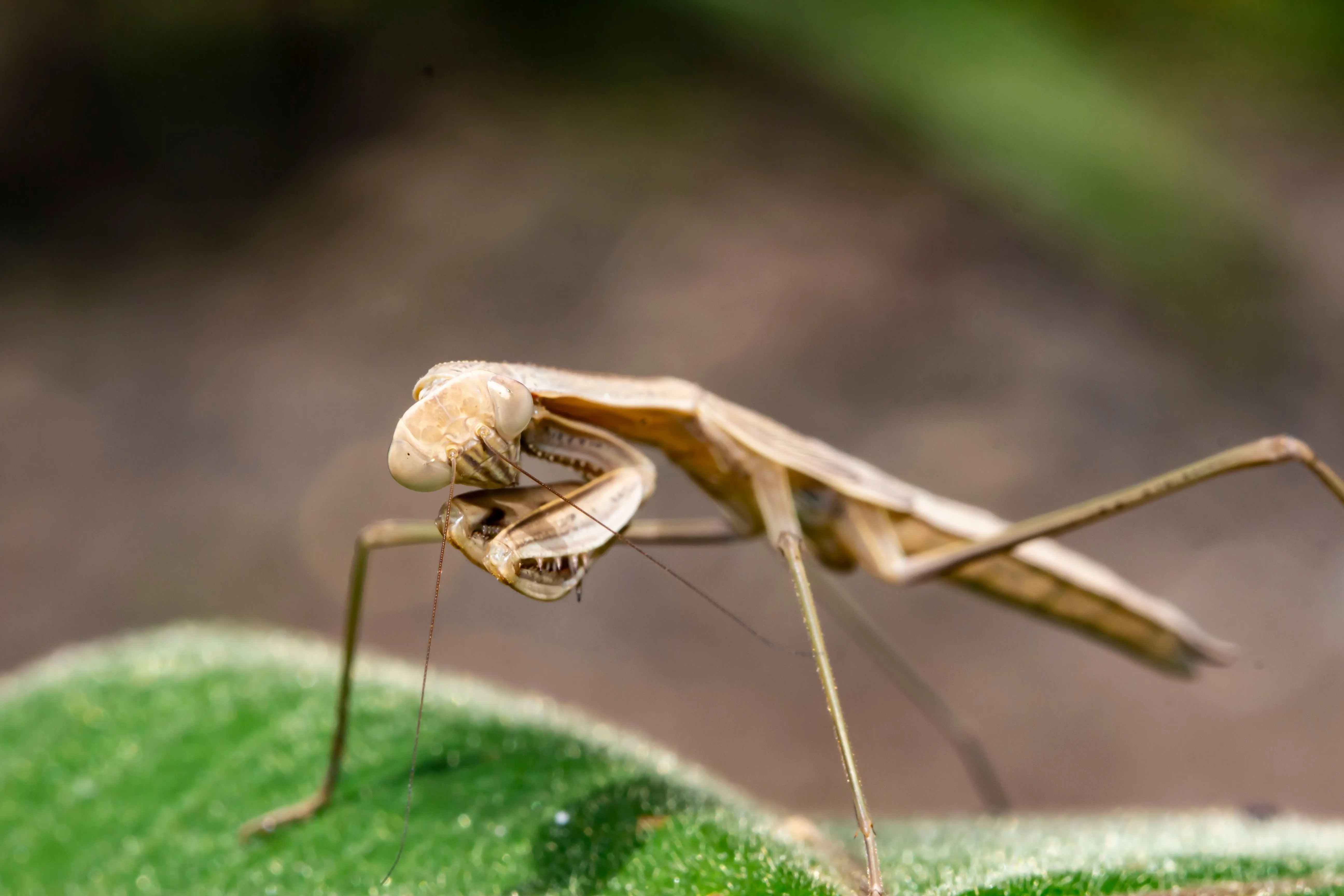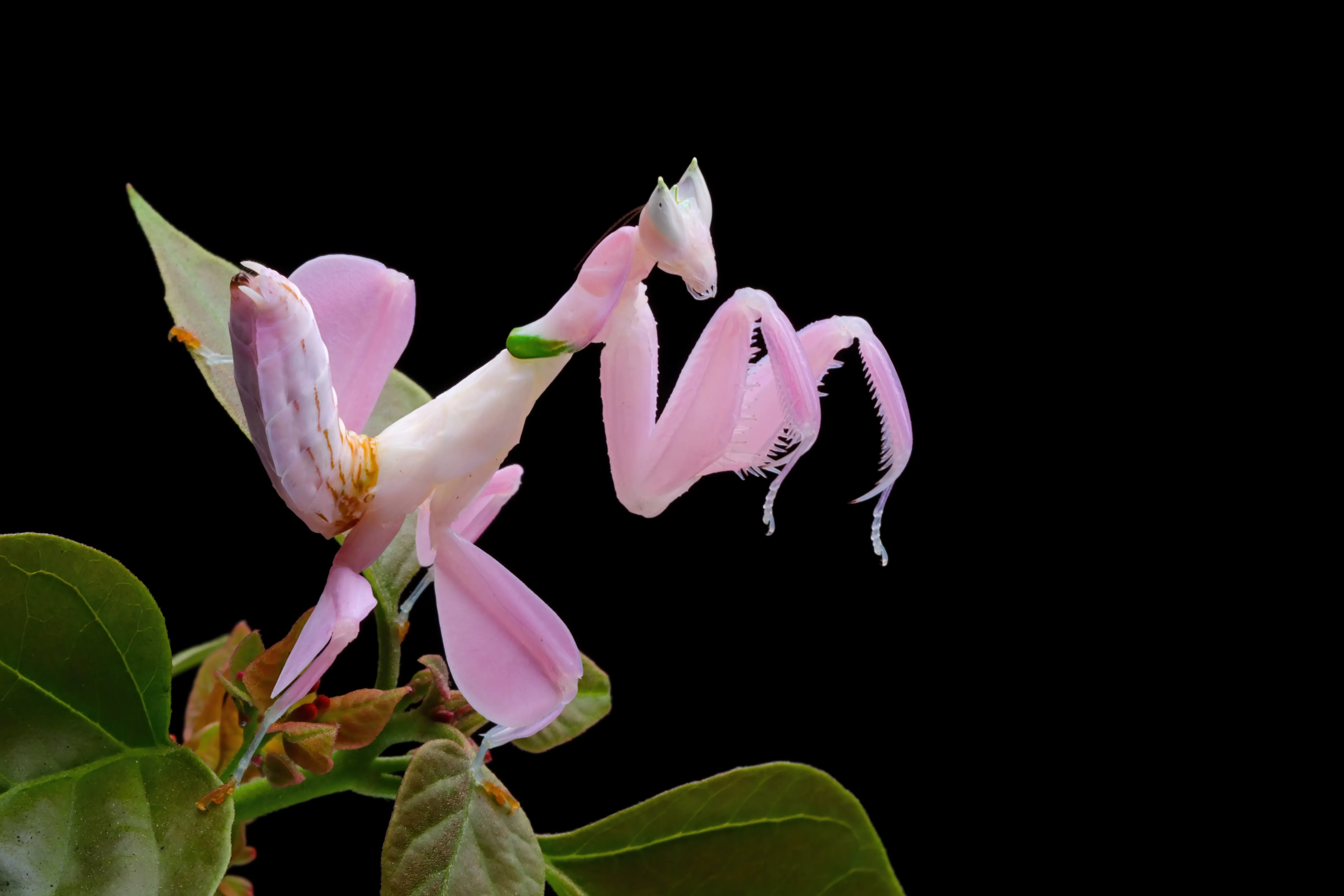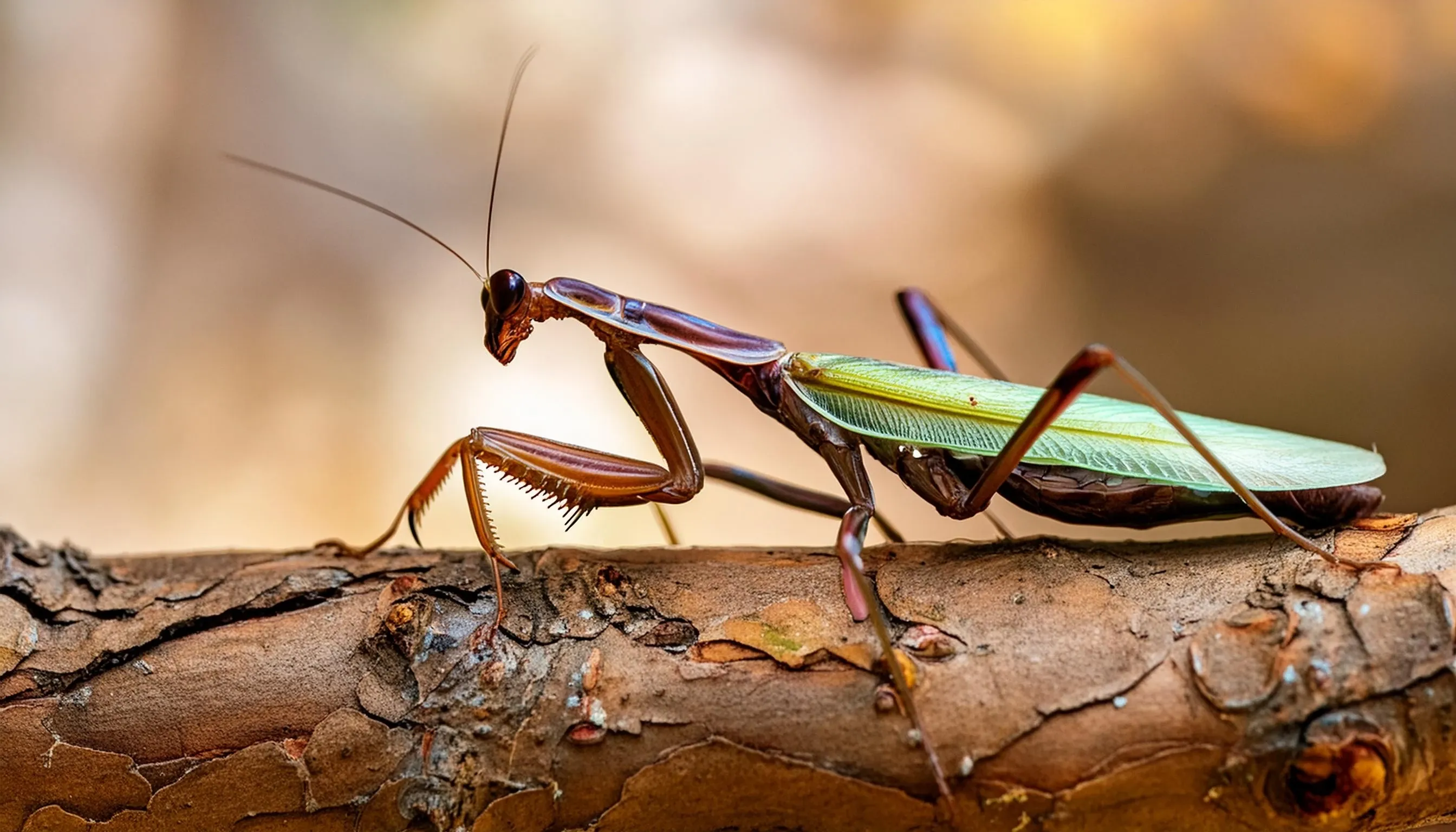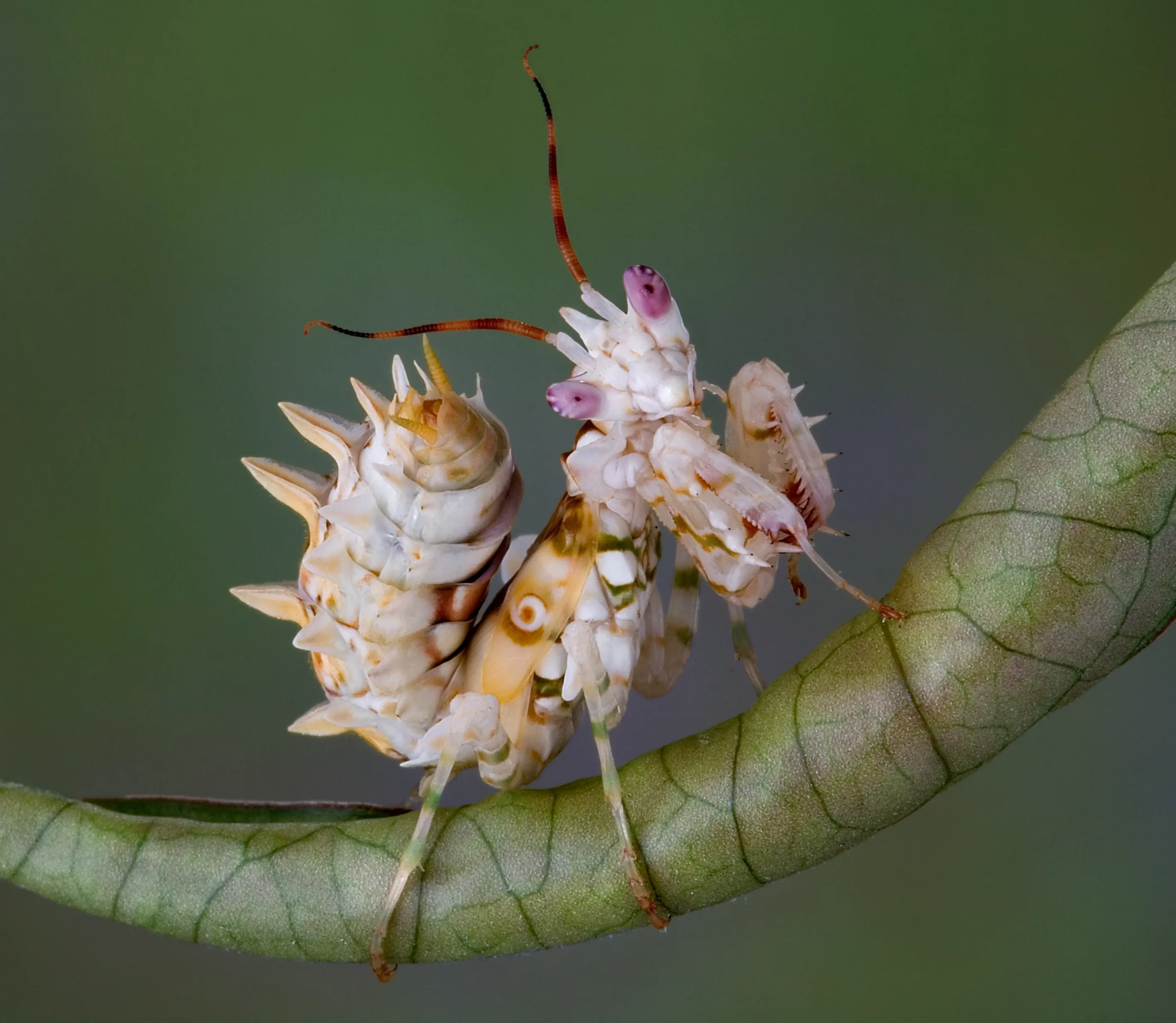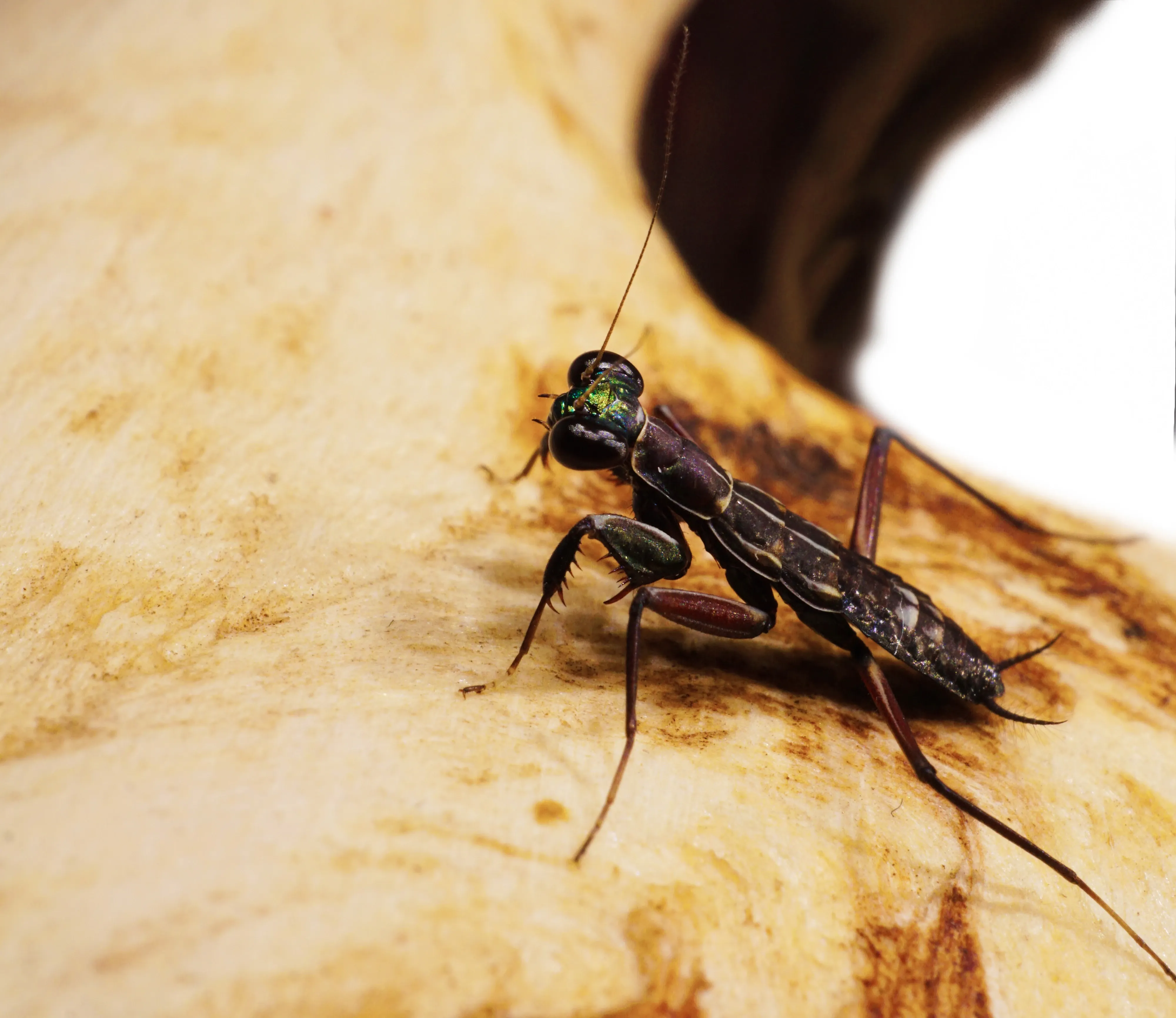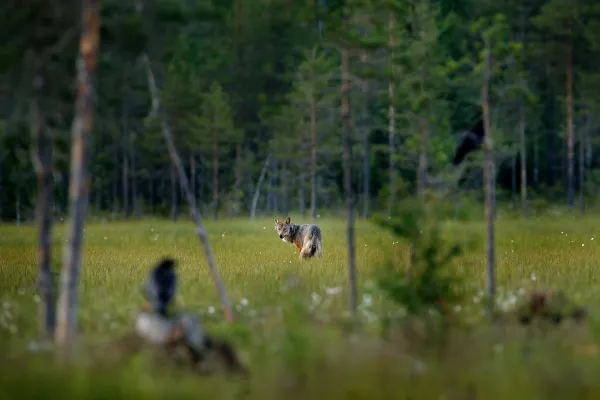Species Introduction: Praying mantis
The praying mantis - also called a praying mantid - is not your average insect. It is a master of mimicry, a fearsome predator, and a lightning-fast striker.
Furthermore, some cultures consider it sacred or supernatural, while its mating habits are highly unusual, to say the least.
What is the praying mantis?
These animals get their name from their prominent front legs. They often hold these bent and laid together, resembling a prayer position. For this reason, many cultures in history have considered them sacred animals. In fact, the word mantis comes from the Greek word mantikos, meaning 'soothsayer' or 'prophet'.
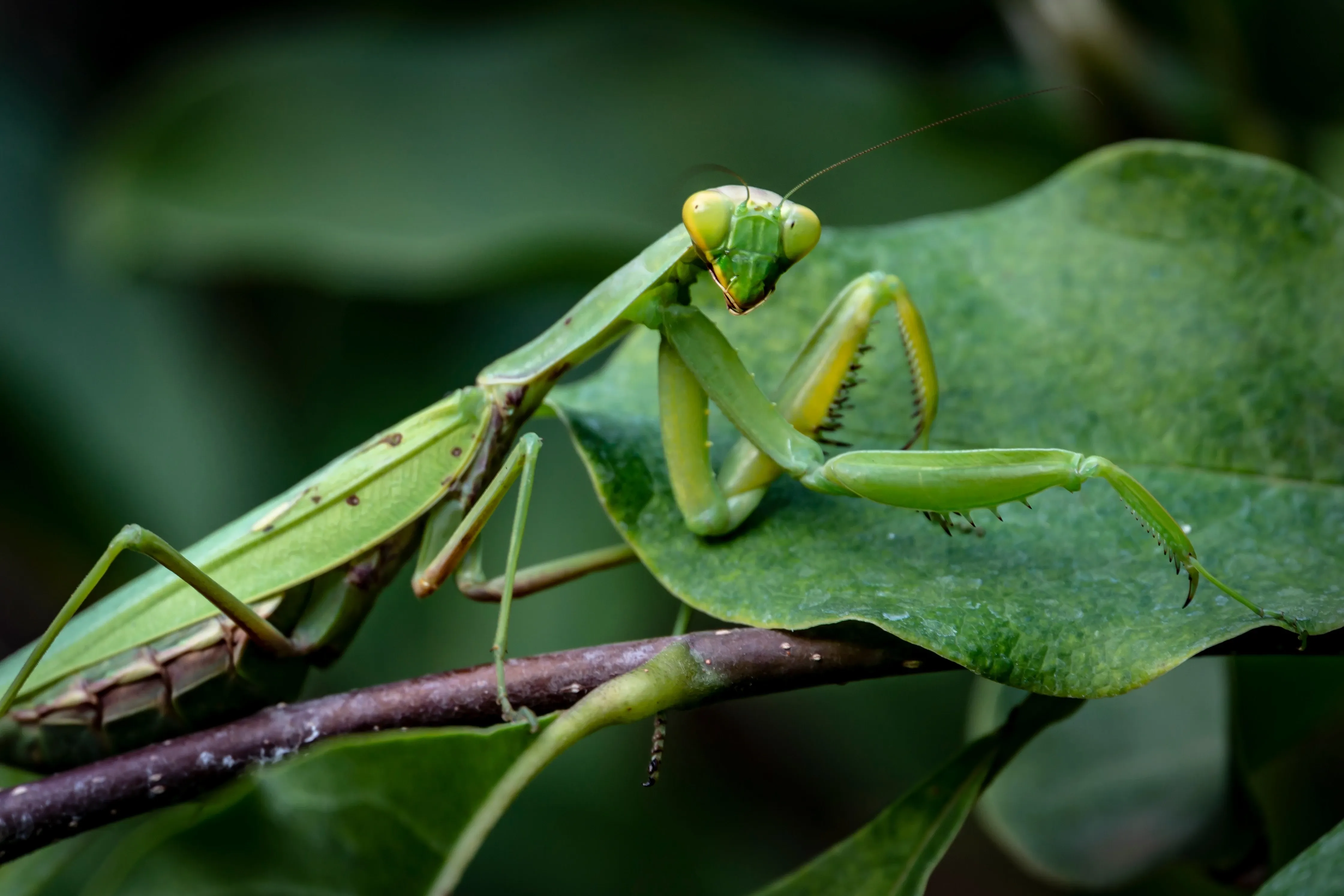
In Ancient Mediterranean culture, people believed that the insect had supernatural abilities and was a symbol of events to come - good or bad. The indigenous Khoisan people of Southern Africa believe that the praying mantis embodies God. Moreover, they view it as good luck if one lands on you.
However, many Italians believe they will fall sick if a praying mantis looks directly at them. Similarly, In Japanese culture, the mantid is a bad omen that may signify death, disease, or other misfortune.
Fact sheet Praying Mantis
- Common name: Praying Mantis
- Scientific name: Mantodea
- Life expectancy: Dependent on species; smaller species can live only 4 weeks, while larger species can live up to a year, or longer in captivity.
- Size: 5 - 12 centimetres on average. However, praying mantis species range between 1 and 18 centimetres.
- Weight: Average of 3 to 5 grams.
- Characteristics: Various colours and unique biological adaptations, most notably pretiniang to camouflage.
- Habitat: Highly variable; arid terrain to tropical jungle.
- Distribution: Found in most countries worldwide.
- Diet: Preys primarily on insects; however, larger species may feed on snakes, frogs, rodents, and even birds.
- Social organisation: Solitary.
- Threats to survival: Predators, habitat loss.
- Endangered: Dependent on specific species.
Where does the praying mantis live?
Approximately 2400 mantid species exist in habitats worldwide, from tropical rainforests and brassy meadows to savannah lands and deserts. In fact, only a portion of these insects come from the mantis genus. However, while 'praying mantid' is the more accurate term for the species in its entirety, people more commonly call it a praying mantis.
How does the praying mantis reproduce?
Praying mantis mating rituals are notoriously risque. The females tend to bite off the males' heads during or after the mating process. Researchers have witnessed this phenomenon many times in captive mantises. However, there are far fewer recorded cases of mantis mating fatalities in the wild.
Additionally, there is evidence that female mantises are more likely to kill their sexual partners in natural habitats when they face food shortages. Consequently, some scientists believe that this behaviour may be more stress-related than a natural reaction.
What does the praying mantis eat?
The praying mantis is among the largest of insects, with some species reaching up to 12 centimetres in length. All species are carnivorous, with most smaller species feeding primarily on other insects. However, larger ones can overpower prey three times their size, including snakes, lizards, birds, mice, and even soft-shell turtles.
Moreover, some praying mantis varieties also feed on their own kind. These cannibalistic predations may occur regardless of gender and are a separate phenomenon from their sometimes macabre mating rituals. Scientists have noticed it is particularly widespread among praying mantises when food sources are scarce.
The praying mantis seems to be significantly concerned with hygiene after eating its prey. It grooms itself like a cat, wiping its face and body with its forearms and nibbling on its spines to remove any remaining debris.
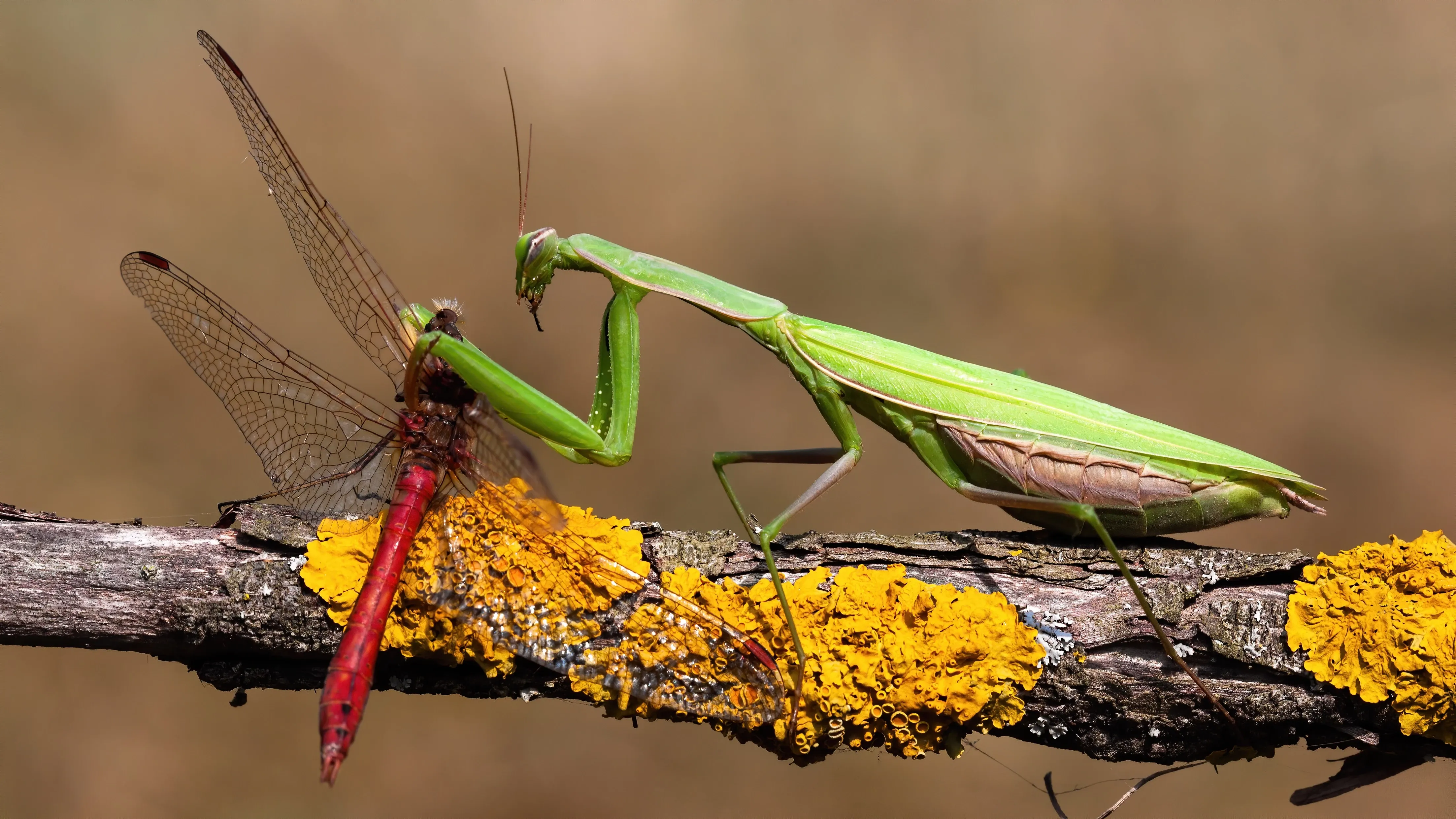
How does the praying mantis hunt?
The serene praying pose they so often assume belies their formidable predatory skills. In fact, the forearms that people so often associate with a prayer pose are deadly weapons. On the underside of these powerful, raptor-like appendages are rows of sharp spikes capable of spearing its targets on impact. The mantis also has strong jaws that it employs as soon as it has impaled its prey, rapidly demolishing its food source, often while it is still alive.
Additionally, mantids' eyes are critical to their hunting prowess. They have compound eyes composed of roughly 10,000 facets, each of which is essentially a miniature, individual eye. Human beings have only two eyes; however, our eyes are placed far enough apart that we have excellent depth perception. Therefore, we can distinguish both animate and inanimate objects more clearly than animals with close-set eyes. Conversely, mantises' large compound eyes are set so close together that they cannot perceive depth easily. Nevertheless, they make up for this deficit with other physical and tactical assets.
Mantids often sway from side to side to better understand how their prey moves against its surroundings. Additionally, they have a remarkable ability to swivel their heads in every direction, even backwards. Thanks to this unique characteristic, they can keep an eye on their target from any angle. And once the mantis has its prey in sight, it engages one of its other lethal mechanisms - its lightning-fast speed. The praying mantis can strike in just one-twentieth of a second - twice as quickly as the blink of a human eye. Very few insects can match its incredible precision and speed.Some kung fu tactics are based on praying mantis moves!
The Mantis is a master of camouflage
Mantids have one more essential defense tactic - they are masters of disguise. Ground-dwelling species often have a mottled, greyish-brown appearance that allows them to remain almost invisible in their natural habitat. Other species are bright green and stay perfectly still for long periods, hidden with the leaves of plants or trees.
However, praying mantises are not only proficient at blending into their surroundings. Some species take their disguise tactics a step further by mimicking specific plants or animals.
The following praying mantis species are among the world's most interesting, beautiful, and biologically innovative.
#1 Ant Praying Mantis
For example, the ant praying mantis, native to Asia, relies on its likeness to ants to deter predators. This tiny species has adapted to resemble ants, which predators typically find far less tasty than mantids.
#2 Ghost Praying Mantis
Ghost mantises originate from Africa and get their name from their masterful ability to hide among dry and dead leaves. These insects rely on their amazing camouflage techniques to hide from predators and creep up on unsuspecting prey.
They have long, leaf-shaped heads, leaf-like protrusions from their legs, and a flattened centre resembling another leaf. Ghost mantises occur in colours from golden-brown to grey-green and charcoal and are virtually indistinguishable from desiccated plant material.
#3 Orchid Praying Mantis
Among the most beautiful of all mantises is the orchid praying mantis. It is also called the Malaysian orchid mantis as it occurs prolifically in Malaysia's rainforests, as well as in several other South East Asian countries.
With its pearly white, pink, and fuchsia hues and petal-shaped forearms, this imposter perfectly impersonates a pink orchid, Hymenopus coronatus.
It lies in wait, perfectly camouflaged, until objects of its prey land unsuspectingly on the orchid, attracted by its delicate fragrance. Then the mantis employs its formidable, fatal hunting skills, striking and pinning its victim in a flash.
#4 Glass Praying Mantis
Indigenous to China, this tiny praying mantis only grows to roughly 2.5 centimetres long. Its entire pale silvery-green body is almost translucent, hence its name. The glass mantis is one of the rarest mantid species on the planet.
#5 Spiny Flower Praying Mantis
The spiny flower mantis is undeniably beautiful, with its spiky body and yellow and green stripes. Additionally, they have two circles outlined with black on the wings that resemble eyes. This praying mantis' stunning markings are not just for show. They serve a critical purpose - to frighten off predators. This amazing insect raises its forearms and opens its wings to reveal these golden globes when intimated. When it does so, it looks like a much larger predator with large, penetrating eyes. This type of defensive behaviour in animals is known as a deimatic display.
#6 Iridescent Bark Mantis
With its shimmering shades of blue, green, gold, amber, and deep purple, the iridescent bark mantis may take the prize for the most beautiful praying mantis of them all. This South East Asian praying mantis is unlike most other mantid species because it does not rely on camouflage as a hunting mechanism. It usually hides under tree bark, snatching insects as they stroll above.
However, it does not rely solely on ambush techniques - it frequently chases its food sources down. So little is known about this exquisite insect that the IUCN has not yet classified it. However, most entomologists believe it is threatened as people so seldom encounter it in the wild.
Sign up for the newsletter
By clicking on “Subscribe now” I will subscribe to the Conscious Explorer newsletter with all the information about mindful travel. Information on the success measurement included in the consent, the use of the shipping service provider MailChimp, logging of the registration and your rights of revocation can be found in our privacy policy.
